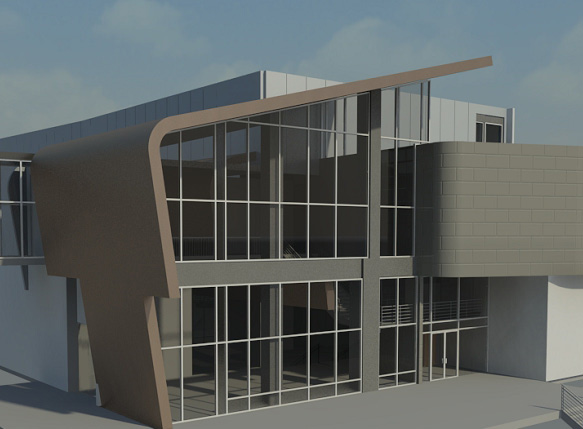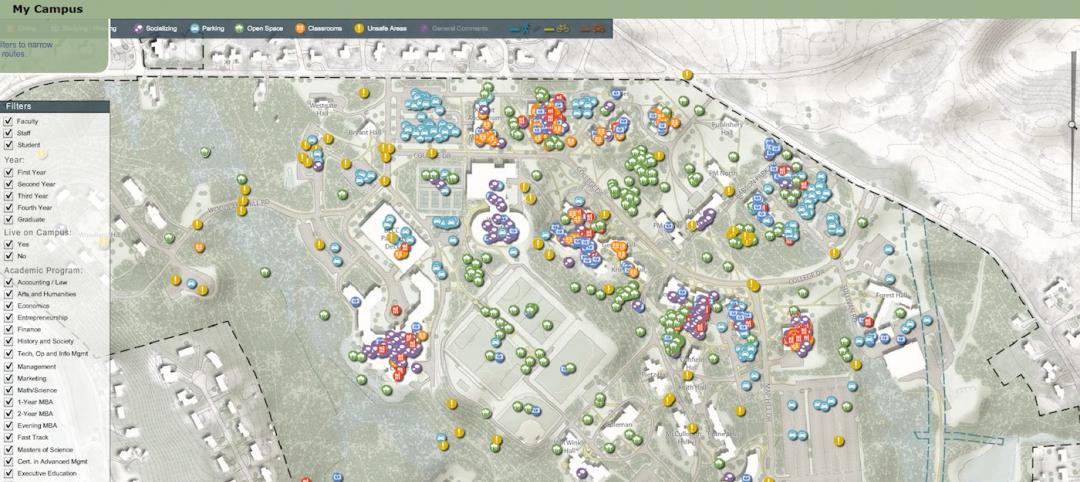Western Michigan University (WMU) is a dynamic, student-centered research university with an enrollment of 25,000. According to the U.S. News & World Report, WMU consistently ranks among the top 100 public universities in the nation. A key factor in these rankings is the university’s commitment to delivering high-quality, industry-relevant undergraduate instruction. That is one of the reasons why the Department of Civil and Construction Engineering introduced the building information modeling (BIM) process and Autodesk Revit Architecture software to the curriculum in 2008. Soon afterward, WMU initiated a much wider implementation of BIM to support the many building design projects that the planning, engineering and construction divisions were working on across the campus.
“We knew that BIM was the way to go,” says Peter Strazdas, associate vice president of facilities at WMU. “However, before using BIM on a new construction project, we wanted to explore its potential on some of our existing, in-house renovation projects.”
The Challenge
To support this effort, WMU initiated a plan to have a group of engineering students model the campus’ existing buildings in Revit Architecture.
“We wanted hands-on experience with buildings that we already understood before we used BIM on new construction,” says Mike Hodgkinson, building commissioning administrator at WMU. “It was a great learning opportunity for the students—and allowed us to stay within a reasonable budget.”
The initial plan was for the students, working 30 to 40 hours per week, to model two-thirds of the 8-million-sf campus between May and September. One of Strazdas’ ultimate goals was to use these models for energy analysis and to help with the subsequent identification of those buildings on campus most in need of renovation and retrofitting. To help demonstrate the project’s feasibility to stakeholders and facilitate whole-project review, the team used the software and its conflict resolution, visualization and planning capabilities.
The Solution
WMU turned to Autodesk reseller Kal-Blue for early guidance and training. Kal-Blue modeled the first campus building, showing the facility management team and students how the process worked. Kal-Blue also developed best practices that the design team could follow and introduced WMU to AIA E202, a document that helped determine how much detail to include in the models.
“If we drafted every detail, the process would have taken too long,” says Strazdas.
After deliberation, WMU used the graduated scale from the AIA E202 document and selected a baseline of Level 200 out of 500 for most of the buildings.
Leverage Existing Drawings
To help accelerate model creation, the design team based its work on the extensive collection of AutoCAD DWG files that WMU maintained.
“Much of the 2D information transferred easily into 3D,” says Hodgkinson. “We also updated the original designs to ensure that our models included all recent building modifications.”
The Result
The WMU design team succeeded in modeling 80% of the campus—115 buildings—by September.
“We easily surpassed our goals,” says Strazdas. “With help from Revit Architecture, our students accomplished an impressive amount very quickly.”
Others were equally impressed; several students have had inquiries from potential employers. Another group of students will complete the remaining buildings in 2011.
Make Better Decisions
Strazdas believes the models will have tremendous value on future renovations.
“We’ll share visualizations with our in-house customers during the review process,” says Strazdas. “That is much easier with Revit Architecture, Navisworks Manage, and a BIM process.”
WMU will also integrate data from the models with energy analysis software for better decisions about energy consumption and effective identification of targets for renovation and retrofitting.
WMU has already begun using the models on a renovation project that requires adding two chillers to an existing building. WMU is enhancing the model with data from a laser scan, and also piping data from an engineering consultant—raising the detail level in that part of the model to 400.
Ultimately, WMU will consolidate all campus buildings into a unified model.
“We own and operate our buildings for 50 years or more—and approximately 90% of the costs occur after construction,” says Strazdas. “We need to make smarter decisions with those assets—and to have access to real-time information about them. BIM is how we access and maintain that information.”
For more information, visit www.autodesk.com/revitarchitecture.
Related Stories
| May 22, 2014
BIM-driven prototype turns data centers into a kit of parts
Data center design specialist SPARCH creates a modular scheme for solutions provider Digital Realty.
| May 22, 2014
Facebook, Telus push the limits of energy efficiency with new data centers
Building Teams are employing a range of creative solutions—from evaporative cooling to novel hot/cold-aisle configurations to heat recovery schemes—in an effort to slash energy and water demand.
| May 15, 2014
'Virtually indestructible': Utah architect applies thin-shell dome concept for safer schools
At $94 a square foot and "virtually indestructible," some school districts in Utah are opting to build concrete dome schools in lieu of traditional structures.
| May 13, 2014
19 industry groups team to promote resilient planning and building materials
The industry associations, with more than 700,000 members generating almost $1 trillion in GDP, have issued a joint statement on resilience, pushing design and building solutions for disaster mitigation.
| May 12, 2014
Defining BIM – What do owners really want?
Given the complexities of the building process, it can be difficult for building owners to effectively communicate what they want and need with BIM. The response to the question usually is, “Give me everything.”
| May 2, 2014
Norwegian modular project set to be world's tallest timber-frame apartment building [slideshow]
A 14-story luxury apartment block in central Bergen, Norway, will be the world's tallest timber-framed multifamily project, at 49 meters (160 feet).
| May 1, 2014
Super BIM: 7 award-winning BIM/VDC-driven projects
Thom Mayne's Perot Museum of Nature and Science and Anaheim's new intermodal center are among the 2014 AIA TAP BIM Award winners.
| May 1, 2014
Chinese spec 'world's fastest' elevators for supertall project
Hitachi Elevator Co. will build and install 95 elevators—including two that the manufacturer labels as the "world's fastest"—for the Kohn Pedersen Fox-designed Guangzhou CTF Finance Center.
| Apr 23, 2014
Ahead of the crowd: How architects can utilize crowdsourcing for project planning
Advanced methods of data collection, applied both prior to design and after opening, are bringing a new focus to the entire planning process.
















